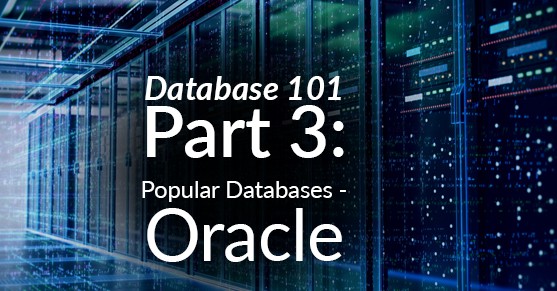Oracle is another popular database the Virtual-DBA team supports. With more than 310,000 businesses in 175 different countries using Oracle Database — many of them on the Fortune 100 list — it’s one of the most widely used databases in the world.
Oracle Database (commonly known as just “Oracle”) is a multi-model relational database management system (RDBMS). The first commercial version came more than 40 years ago in 1979 when Oracle v2 was released as the very first available SQL-based RDBMS for business and private enterprise. Since then, Oracle has delivered more than 20 versions of their database system. The latest edition of Oracle (Oracle Database 18c) can be operated on various systems and is available on-premise, on cloud, or for hybrid on-prem-cloud environments.
Oracle supports standard SQL and offers reliable services around storage (predefined types of data/massive data), database recovery, and data management. Additionally, users get access to a wide range of features and options for scalability, analytics, performance, availability, and integration. Oracle also boasts streamlined key identification, easy security set up for both systems and application data, and innovative portability.
As a result of its keen adaptability and practicality for managing data and handling software applications, Oracle is a popular RDBMS choice for big business processing and software applications. When a business is overflowing with data from numerous systems and applications, Oracle can help with big data warehousing jobs and online transaction processing (OLTP). Oracle also offers strong SQL- and Pl/SQL-centered application development servers that cover numerous capabilities from transactions and globalization to application programming interfaces (API) and datatypes.
Although it’s seen as a staple for big data and larger enterprises, Oracle can be used by organizations of all types with data/workloads of any kind.
Whatever your needs are, Oracle has developed several editions of their database to engage the necessary functions of any business. Using XTIVIA’s services, our experienced experts can help you support and license any edition in the Oracle catalogue.
- Editions (presented alphabetically, list subject to change at Oracle’s whim):
- Oracle Database 18c (latest version)
- The most recent release of the Oracle Database is offered in several editions:
- Oracle Database Enterprise Edition (EE)
- Oracle Database Express Edition (XE)
- Oracle Database Personal Edition (PE)
- Oracle Database Standard Edition 2 (SE2)
- Oracle also offers users the ability to develop their own applications in Java and PL/SQL via the following tools:
- Oracle Forms
- Oracle JDeveloper
- Oracle Reports
- The most recent release of the Oracle Database is offered in several editions:
- Oracle Database 18c (latest version)
- High Availability:
- Oracle Real Application Cluster (RAC)
- Replication:
- Oracle Data Guard/Active Data Guard, Oracle Golden Gate, Oracle Advanced Replication, and Oracle Streams.
- HA Storage Solution:
- Automatic Storage Management (ASM)
- Backup and Recovery:
- Oracle Recovery Manager (RMAN)
- Zero Data Loss Recovery Appliance (ZDLRA)
- Database Appliances:
- Oracle Exadata
- Oracle Database Appliance (ODA)
- Operating System:
- Oracle Database 12c and 18c is supported on several OS platforms and combinations, including:
- Linux on x86-64 (Red Hat Enterprise Linux, Oracle Linux, and SUSE distributions)
- Microsoft Windows on x86-64
- Oracle Solaris on SPARC and x86-64
- IBM AIX on POWER Systems
- Linux on IBM zEnterprise Systems
- HP-UX on Itanium
- Oracle Database 12c and 18c is supported on several OS platforms and combinations, including:
- Cloud: Oracle Database Cloud Services, currently supporting Oracle Database 11g, 12c, or 18c
- Database Cloud Service – Virtual Machines
- Database Cloud Service – Bare Metal
- Exadata Cloud Service
- Exadata Cloud at Customer
- History:
- Originally founded in 1977 as Software Development Laboratories (SDL), Oracle cycled through several names and offered a number of pioneering products between 1979 and 1995. They offered the first commercial SQL RDBMS, the first database with read-consistency, full applications implementation methodology, and the first 64-bit RDBMS. In 1995, the name changed permanently to Oracle Corporation and they continued to break ground on numerous projects throughout the late ’90s and early 2000s. As of 2018, their strategic acquisition and product development has allowed Oracle to become the third largest software maker (by revenue) in the world accruing nearly $38 million in 2017 with their 138,000 employees.

